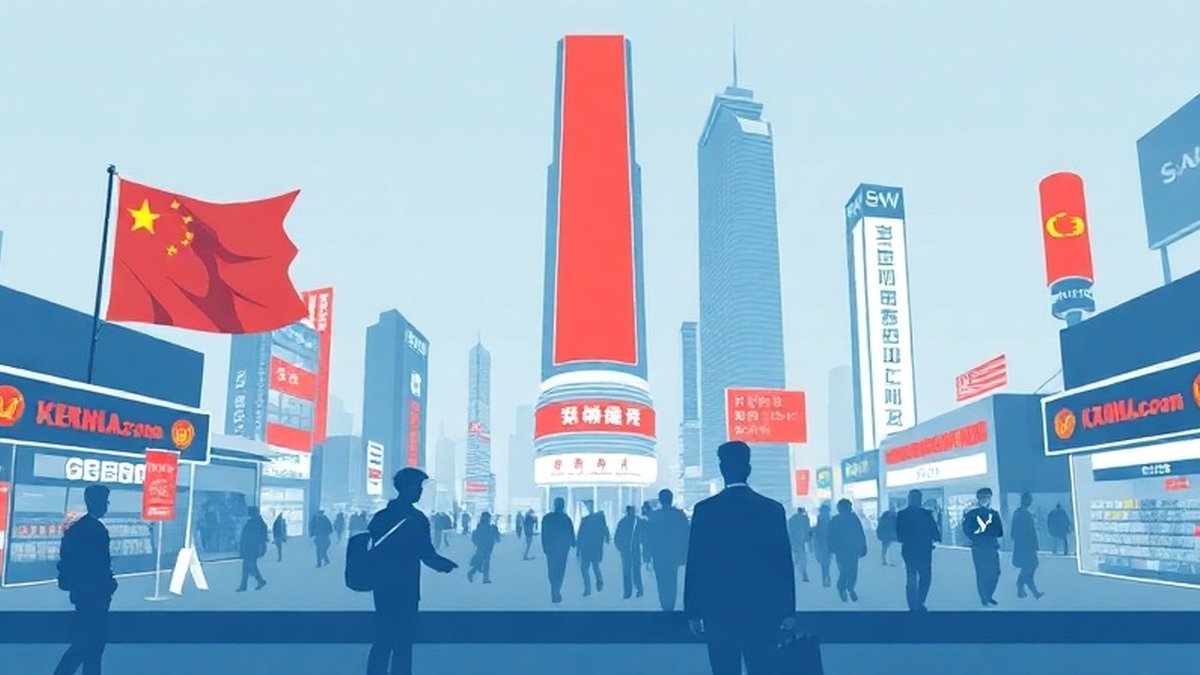China’s Domestic Demand Rebounds, Offering Hope for Broader Growth
China’s latest economic data paints a cautiously optimistic picture: retail sales and services activity are gaining traction, suggesting that domestic consumption — long seen as a missing pillar of post-pandemic recovery — is finally beginning to accelerate. This rebound is sparking renewed optimism across Asia, even as the country’s troubled property sector continues to weigh on overall growth dynamics.
1. Retail and Services Lead the Way
1.1 Robust Urban Consumption
Recent figures showed a notable rise in retail sales, particularly in urban centers where discretionary spending has improved across key categories such as automobiles, consumer electronics, luxury goods, and dining services. Analysts attribute this strength to targeted fiscal incentives, improved household sentiment, and pent-up demand following a prolonged period of cautious spending.
The services sector has also expanded, driven by strong performance in travel, hospitality, entertainment, and financial services. This upturn underscores a shift toward a more balanced economic model, with consumption and services gradually taking a larger share of GDP relative to heavy industry and exports.
1.2 Policy Support as a Catalyst
China’s policymakers have introduced a range of supportive measures to stabilize domestic demand. These include consumption vouchers, tax breaks for small businesses, and local government stimulus programs aimed at promoting household spending. Easing credit conditions for select sectors and moderate rate cuts by the People’s Bank of China (PBoC) have also helped restore liquidity and bolster confidence.
Market strategists believe that Beijing’s gradual, targeted approach is designed to avoid excessive stimulus while maintaining macroeconomic stability. The focus appears to be on fostering sustainable, consumption-led growth rather than repeating large-scale infrastructure booms of the past.
2. Property Sector: A Persistent Drag
2.1 Structural Weakness Persists
Despite improvements in consumption, China’s property market remains a key source of fragility. Developers continue to grapple with high leverage, weak sales, and tight refinancing conditions. Although certain localities have relaxed mortgage restrictions and down-payment requirements, the recovery in housing demand has been uneven and far from robust.
The government has stepped in with selective fiscal and credit support, but policymakers remain cautious about reigniting speculative bubbles. As a result, real estate investment and construction activity remain subdued, limiting spillover effects to industries like steel, cement, and household furnishings.
2.2 Managing Risks While Rebalancing
Authorities face the challenge of balancing short-term stabilization with long-term structural reform. Efforts to transition away from property-driven growth toward a more diversified economy are ongoing, but the process introduces friction. Credit tightening in speculative markets, combined with efforts to deleverage local government financing vehicles (LGFVs), has constrained liquidity, dampening overall growth momentum.
3. Regional and Global Implications
3.1 Spillover Effects Across Asia
Improved consumption and services activity in China have lifted sentiment across Asian equity markets, particularly in economies with close trade linkages. Exporters of consumer goods, autos, and luxury products — such as South Korea, Japan, and Singapore — are seeing stronger order flows, while commodity-linked economies like Australia and Indonesia are benefiting from steadier demand for raw materials.
In financial markets, the rebound has strengthened regional currencies and boosted capital inflows into emerging Asia, as investors bet on a more stable growth trajectory.
3.2 Counterbalance to Global Weakness
At a time when advanced economies face slowing demand and tighter monetary policy, China’s consumption-led recovery provides a modest counterweight to global growth headwinds. Stronger domestic spending could help offset export softness and stabilize regional supply chains, though analysts caution that external demand remains fragile due to weak European and U.S. imports.
4. Sustainability and Risks Ahead
4.1 Key Conditions for Durable Growth
For the recovery to become self-sustaining, China will need continued progress in employment gains, income growth, and credit normalization. Household confidence remains sensitive to job security and property wealth, both of which influence spending behavior. Broader financial easing and structural reforms aimed at improving private-sector sentiment could further reinforce momentum.
However, risks persist. A deeper property correction, uneven policy transmission, or renewed global demand shocks could derail the current trajectory. Moreover, policymakers must navigate carefully to avoid exacerbating financial imbalances while supporting near-term growth.
4.2 Outlook: Gradual Rebalancing
Most economists expect China’s GDP growth to stabilize in the coming quarters, supported by a consumption revival and targeted fiscal measures. While the property sector will likely remain a drag, a diversified growth base — spanning services, green industries, and technology — could cushion downside risks.
The broader narrative is one of cautious optimism: consumption and services are gaining traction, but structural headwinds require vigilant policy management. As the world’s second-largest economy, China’s ability to engineer a smooth rebalancing will play a crucial role in shaping regional and global economic trends.
For deeper insights into China’s economy, policy responses, and regional spillovers, visit our Altcoin Analysis | Exchanges | Apps & Wallets
